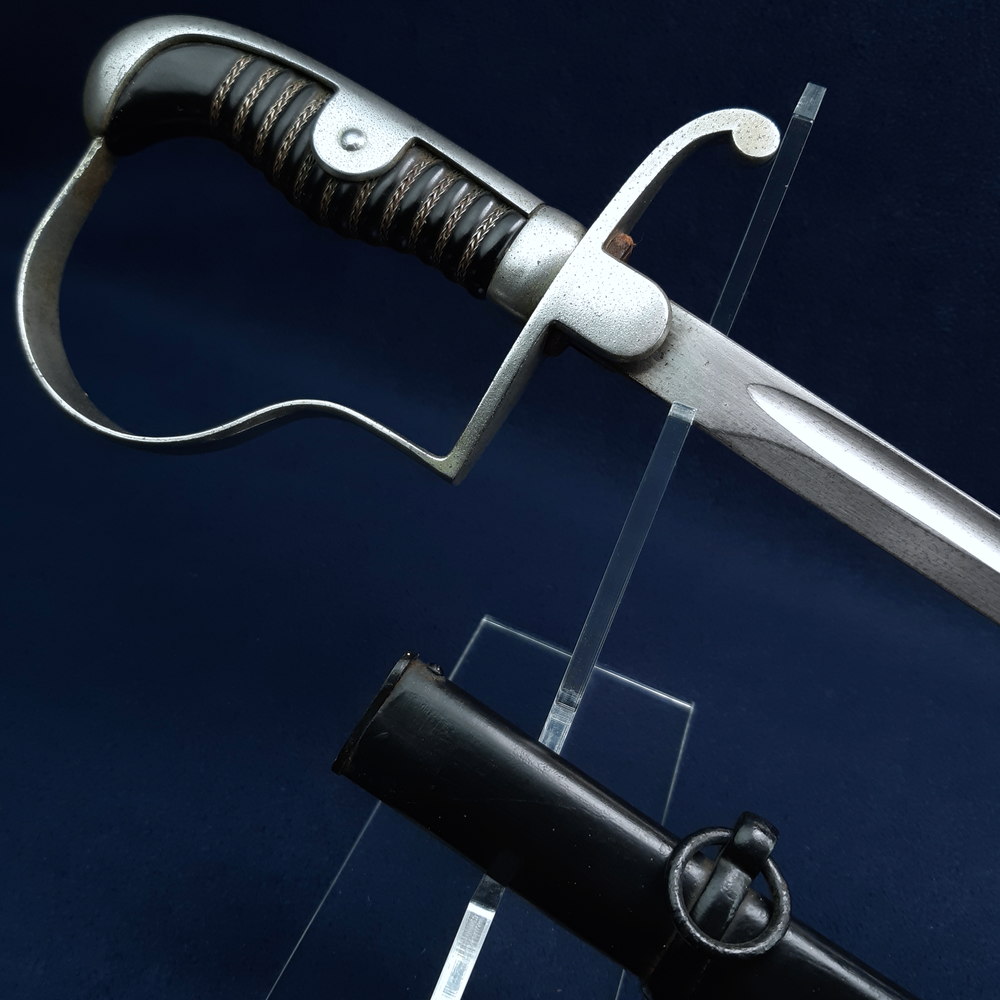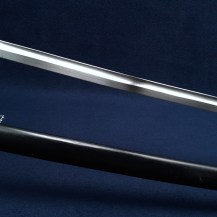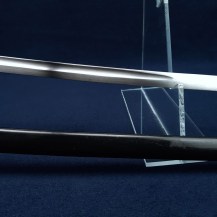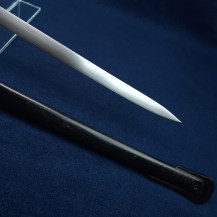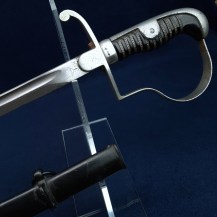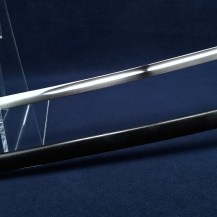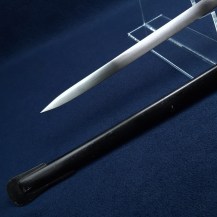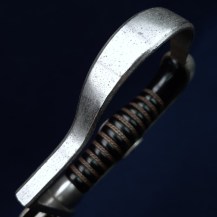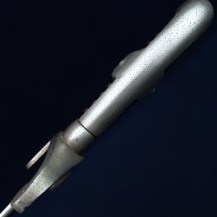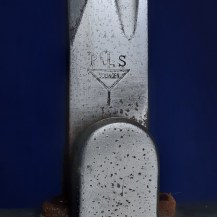German WW2 Army NCO’s Sword ‘Extrasäbel’ by Paul Seilheimer, Solingen
Curved, narrow single-fullered blade with spear point. P-shaped single bar hilt with quillon, shield-shaped langets, steel backstrap with riveted ears. Grip of ribbed black plastic bound with gilt wire. Brown leather washer. Steel scabbard painted black, with single fixed hanging ring and frog loop.
The blade is stamped on one side with a mark of a P-hilt sabre vertically impaling a triangle that contains the word ‘SOLINGEN’. The sword’s hilt lies between the letters ‘P’ and ‘S’. This is the maker’s mark of Paul Seilheimer of Solingen.
Established in 1917, the firm of Paul Seilheimer was one of many based in the city of Solingen, Germany. It manufactured swords and bayonets as well as kitchen cutlery. It was an approved government manufacturer of swords and daggers for various military and political organisations throughout WW2, although examples are relatively scarce so this may not have been at a large scale. The company ceased trading in 1970.
‘Extrasäbel’, or ‘specialty sabres’ were privately purchased from a number of retailers by German soldiers and NCOs, and were not an official pattern, although they were very similar to the Army officer’s sword. They were carried for show, ceremonial use, or as a dress sword. Not being fighting swords, the buyers often chose to ornament the blades, which could include plating, etching, bluing etc.
This model is visible in product catalogues of the period produced by Waffenfabrik Paul Seilheimer, where it is listed as ‘Mannschafts-Extrasäbel’ – Mannschaft meaning ‘enlisted personnel’ which were distinct from officers (Offizier).
All metal pieces of the sword itself have been nickel plated, with some light speckled wear to the plating overall, including the blade. The wire binding of the grip is all intact and tight, some fractional movement to the hilt and grip. The scabbard is free of dents and retains almost all its original paint with only a few small chips.

